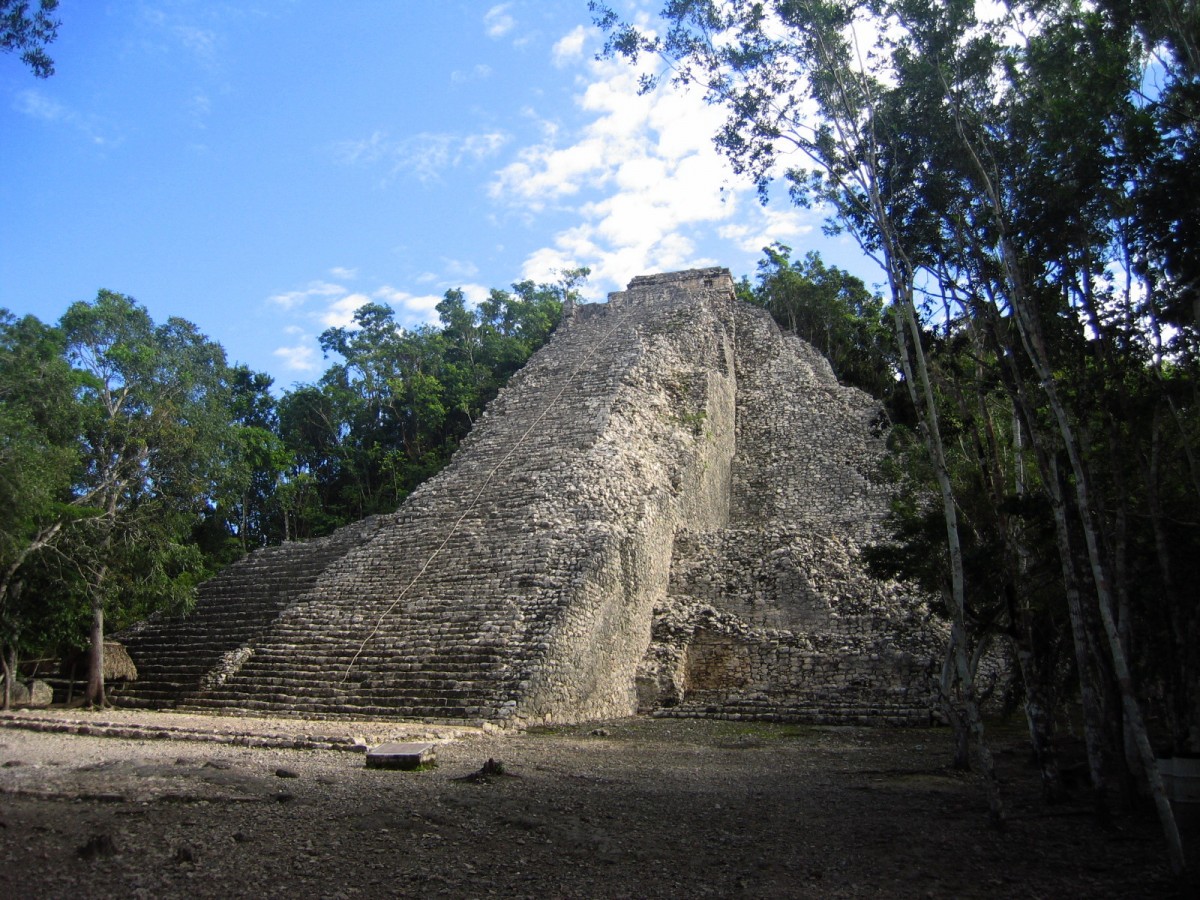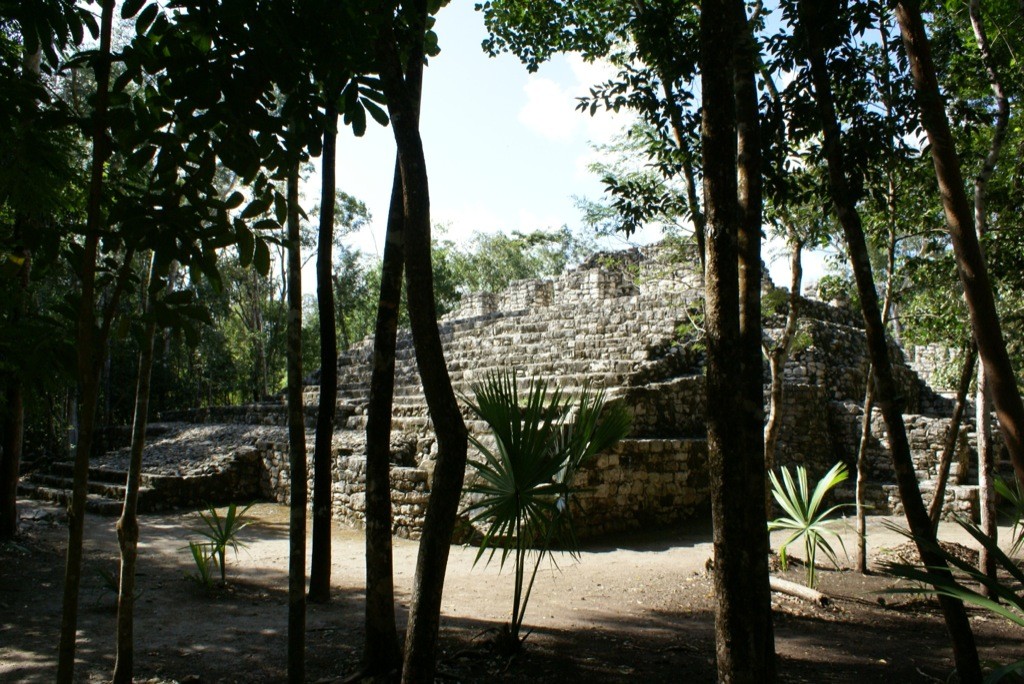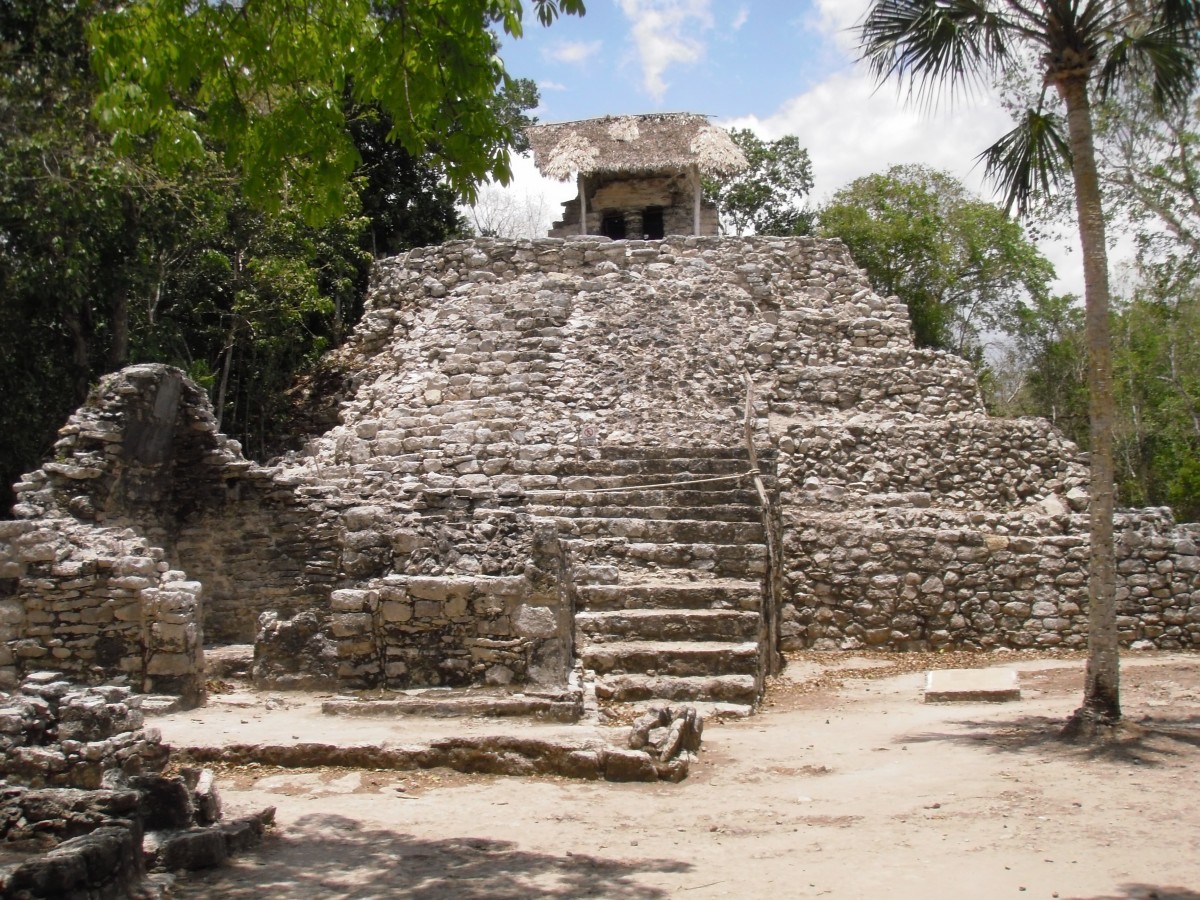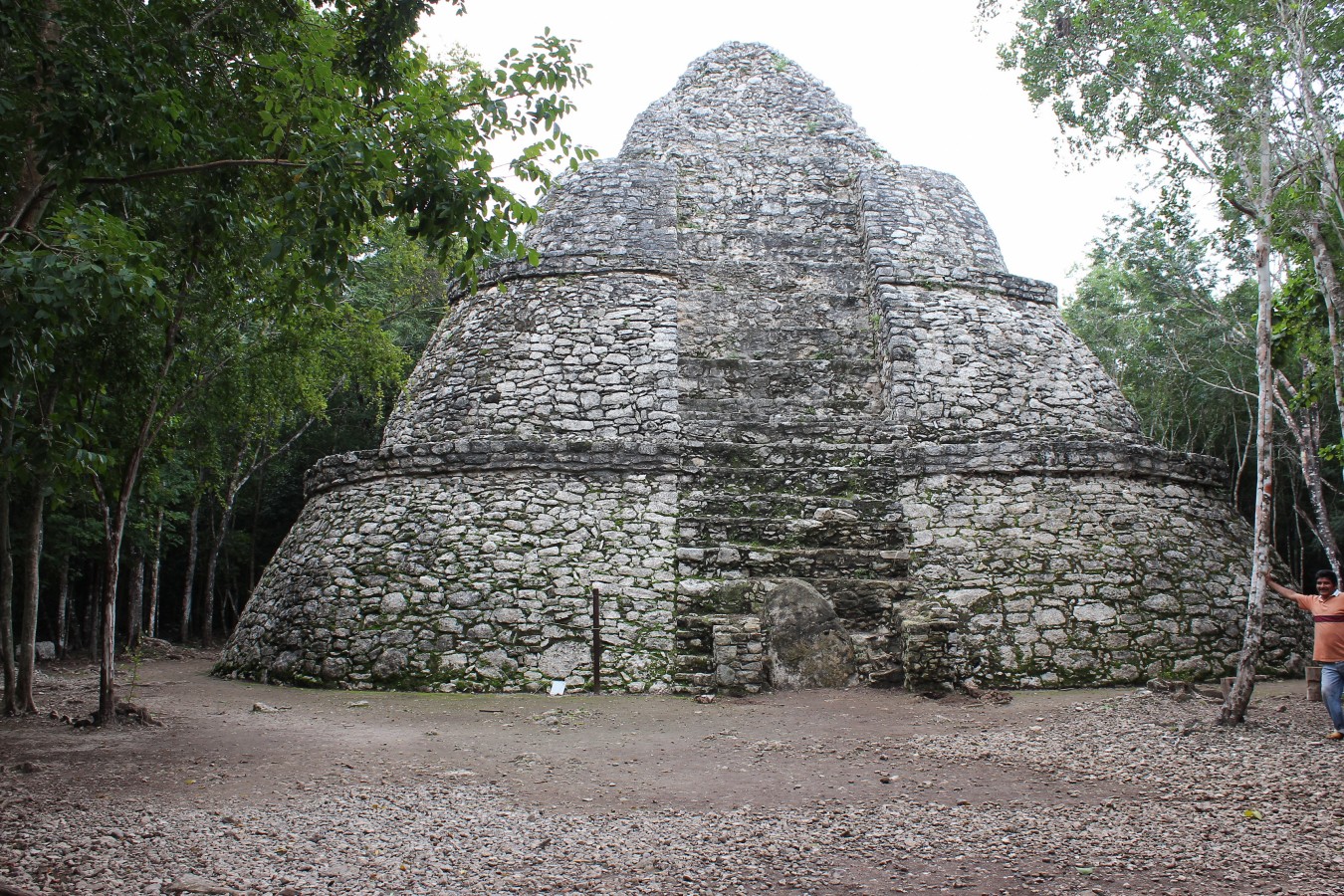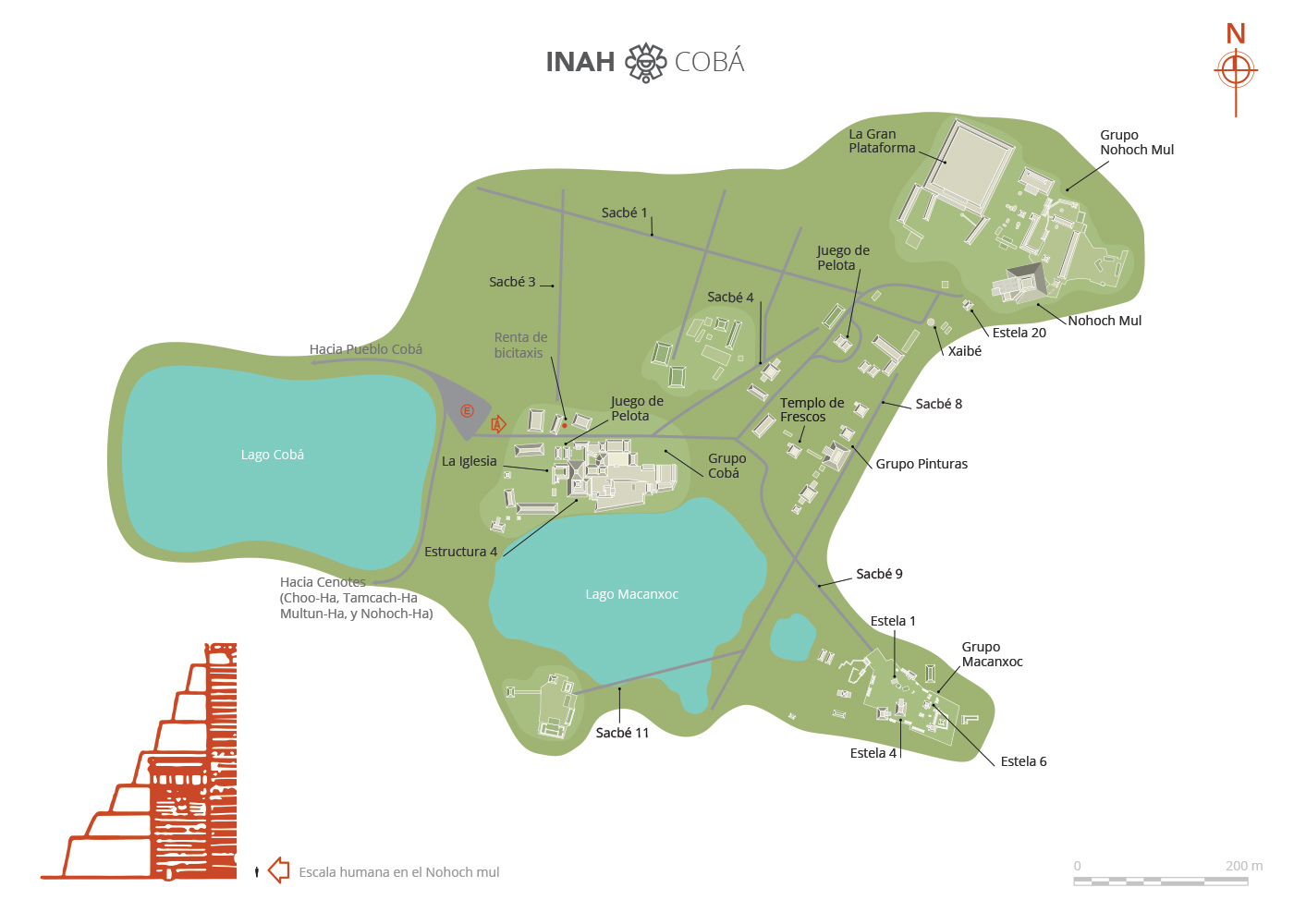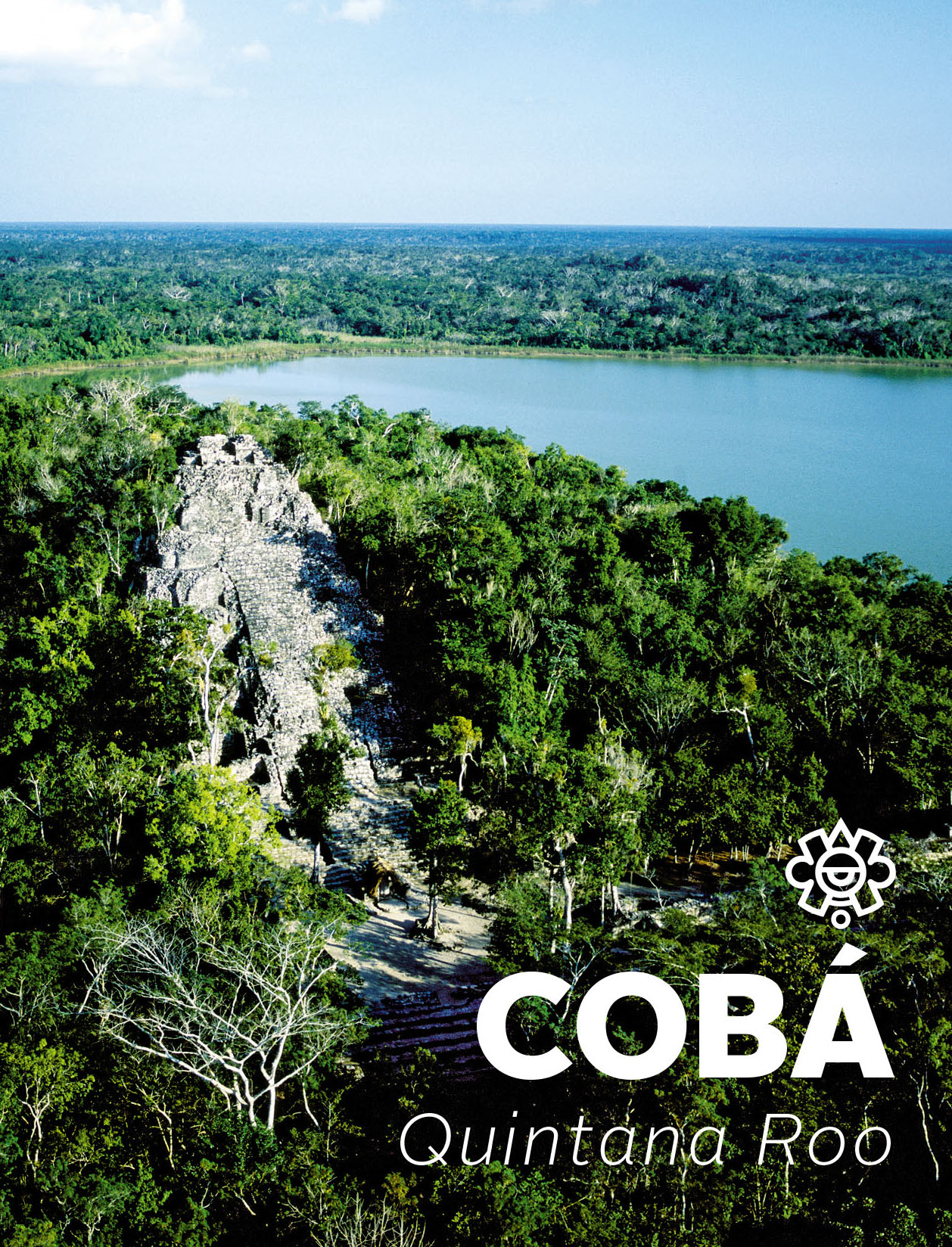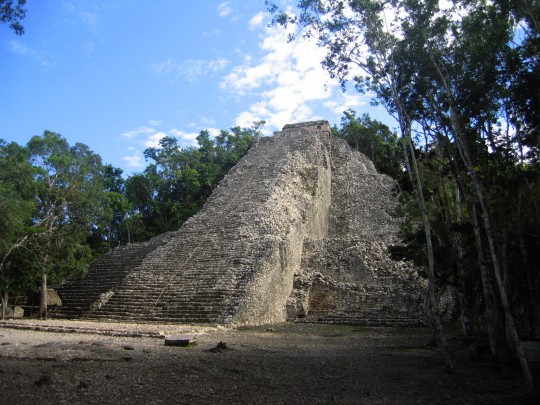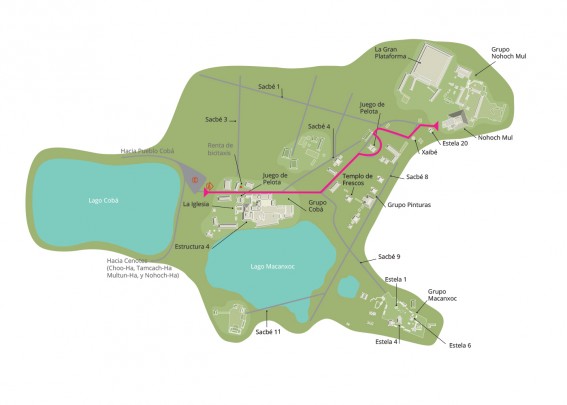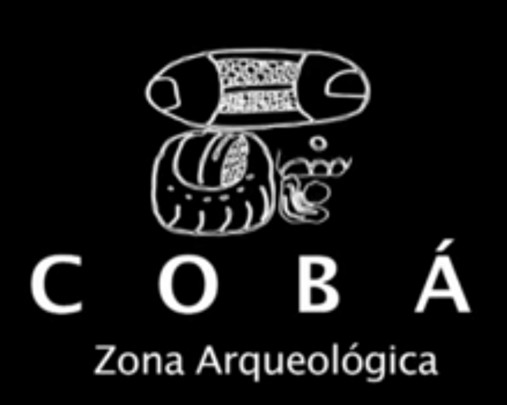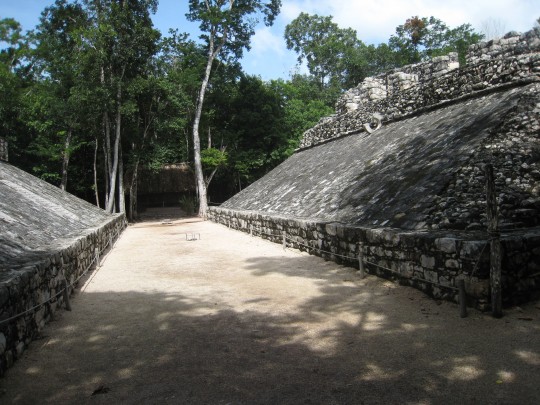Cobá
Choppy water
Important ancient Maya city in an area of lakes, from here the great sacbe’ob (long roads) were built, which helped it survive over many others until it was defeated by Chichen Itza. The round observatory, the great Pyramid of Nohoch Mul and the stunning inscriptions make it unique.
About the site
Coba, the city surrounded by five lakes, was one of the most important cities of the northern Maya lowlands. It dominated an extensive territory, and its 50 raised roads, known in Maya as sacbes (white roads), served ceremonial, administrative and residential centers. As well as creating alliances, trading and opportunities for interchange, the roads enabled Coba to exercise control over other groups. Two of the roads connected more distant places, such as Ixil, 12.5 miles away and Yaxuná, 62 miles away.
The city of Coba is one of the few pre-Hispanic settlements to keep its original name, as testified by the inscriptions carved on the monuments. Like many Mesoamerican settlements, in its early days, which was from the first century BC to the second AD, it consisted of small villages which lived by farming and hunting. Afterwards, its economy grew and its political organization improved, with power becoming more centralized; marking the start of a long process of consolidation as a city.
Coba grew and expanded between the fifth and tenth centuries. Roads were built and stelae and panels were sculpted. The road network kept expanding, and political and trading relationships began with other Mayan towns to the west and south of the peninsula, in the Guatemalan Peten as well as the Gulf and central Mexico. Between 900 and 1000 it rivaled Chichen Itza, and was ultimately defeated by it, but Coba managed to preserve its status as a religious and commercial center despite being confined to the second tier politically. It even managed to survive longer than its victorious rival. Its architecture has signs of influence from the Peten, but with a strongly local flavor, an indication that its political elite managed to establish political relations far afield.
Coba was completely abandoned by the time the Spanish conquistadors took over the Yucatan peninsula, and it remained that way until the explorer John Lloyd Stephens reported its existence in 1842, yet without ever actually seeing it. Only the odd chicle tapper, in search of the valuable sap of the sapote tree, ever went deep into the forest. Juan Peón Contreras and D. Elizalde arrived at Coba in 1886, sketching just one of the temples. The next to arrive was Teobert Maler in 1891. He provided us with the first photograph of a temple at Coba.
In 1926, the Carnegie Institute in Washington began a series of expeditions sending notable archeologists and epigraphists, who produced valuable work first published in 1932. Other researchers followed until 1972 when the INAH undertook the tasks of excavating, mapping, consolidation and rescue, which culminated in the opening of the site to the public.
Highlights include reliefs and stelae of prisoners and calendar inscriptions of notable events, and there are two particularly important buildings in terms of their size and height. One is the Nohoch Mul, in a group of the same name, and the other is known as “La Iglesia” (The Church), in the Coba Group. The Mayan architects and the mass of laborers—the stone-cutters, water and stone carriers, as well as the lime stucco makers—have left us majestic buildings in beautiful harmony with the luxuriant natural setting.
The city of Coba is one of the few pre-Hispanic settlements to keep its original name, as testified by the inscriptions carved on the monuments. Like many Mesoamerican settlements, in its early days, which was from the first century BC to the second AD, it consisted of small villages which lived by farming and hunting. Afterwards, its economy grew and its political organization improved, with power becoming more centralized; marking the start of a long process of consolidation as a city.
Coba grew and expanded between the fifth and tenth centuries. Roads were built and stelae and panels were sculpted. The road network kept expanding, and political and trading relationships began with other Mayan towns to the west and south of the peninsula, in the Guatemalan Peten as well as the Gulf and central Mexico. Between 900 and 1000 it rivaled Chichen Itza, and was ultimately defeated by it, but Coba managed to preserve its status as a religious and commercial center despite being confined to the second tier politically. It even managed to survive longer than its victorious rival. Its architecture has signs of influence from the Peten, but with a strongly local flavor, an indication that its political elite managed to establish political relations far afield.
Coba was completely abandoned by the time the Spanish conquistadors took over the Yucatan peninsula, and it remained that way until the explorer John Lloyd Stephens reported its existence in 1842, yet without ever actually seeing it. Only the odd chicle tapper, in search of the valuable sap of the sapote tree, ever went deep into the forest. Juan Peón Contreras and D. Elizalde arrived at Coba in 1886, sketching just one of the temples. The next to arrive was Teobert Maler in 1891. He provided us with the first photograph of a temple at Coba.
In 1926, the Carnegie Institute in Washington began a series of expeditions sending notable archeologists and epigraphists, who produced valuable work first published in 1932. Other researchers followed until 1972 when the INAH undertook the tasks of excavating, mapping, consolidation and rescue, which culminated in the opening of the site to the public.
Highlights include reliefs and stelae of prisoners and calendar inscriptions of notable events, and there are two particularly important buildings in terms of their size and height. One is the Nohoch Mul, in a group of the same name, and the other is known as “La Iglesia” (The Church), in the Coba Group. The Mayan architects and the mass of laborers—the stone-cutters, water and stone carriers, as well as the lime stucco makers—have left us majestic buildings in beautiful harmony with the luxuriant natural setting.
Map
Did you know...
- In 1933, Alfonso Villa Rojas (1897-1998) traveled the almost 62-mile-long Sacbe 1 that connects Coba with Yaxuna, a site near Chichen Itza.
An expert point of view
The city of Coba came about as a result of the physical, intellectual, technical and artistic endeavors of thousands of people over hundreds of years.
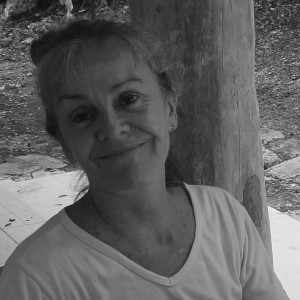
María José Con Uribe
Centro INAH Quintana Roo
Practical information
Temporarily closed
Monday to Sunday from 9:00 to 17:00 hrs. Last entry 15:30.
$100.00 pesos
Se localiza al noroeste del estado de Quintana Roo, en el municipio de Tulum.
From the city of Cancun, take Federal Highway 307 towards Tulum and continue on State Highway 109 towards Nuevo Xcan. The site is located 43 km further on.
-
+52 (983) 837 24 11
-
This email address is being protected from spambots. You need JavaScript enabled to view it.
Directory
Jefe de la Zona Arqueológica
José Manuel Ochoa Rodríguez
This email address is being protected from spambots. You need JavaScript enabled to view it.

